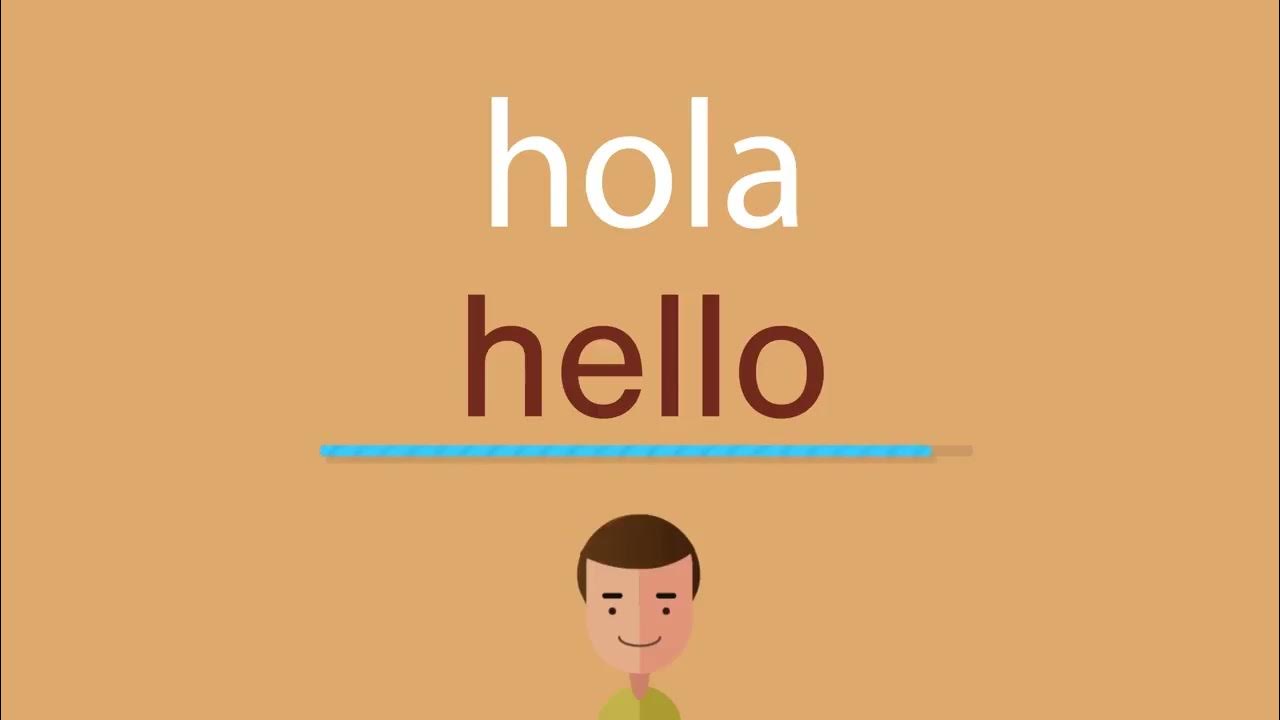In our increasingly interconnected world, the ability to communicate across languages is more important than ever. One of the simplest yet most essential forms of communication is greeting someone. If you speak Spanish and are curious about how to greet someone in English, you're in the right place! Understanding how to say "hola" in English can facilitate smoother interactions and help you connect with English speakers more effectively.
When venturing into a new language, greetings serve as the first bridge between cultures. They are usually the first words exchanged, setting the tone for the conversation that follows. The phrase "cómo se dice hola en inglés" is one that many Spanish speakers ponder as they start their journey into the English language. In this article, we will explore the various ways to say "hola" in English, along with tips on how and when to use these greetings appropriately.
Whether you're traveling, working, or simply trying to make new friends, knowing how to greet someone in English is a vital skill. In addition, we'll discuss some cultural nuances associated with greetings, so you can feel more confident when engaging in conversations with English speakers. So, let’s dive into the fascinating world of greetings and discover how to say "hola" in English!
What is the English Translation of "Hola"?
The most straightforward translation of "hola" in English is "hello." This friendly greeting is universally recognized and can be used in almost any context. Here are some key points to consider:
- "Hello" is appropriate for both formal and informal situations.
- It can be used when answering the phone as well.
- In written communication, "hello" is often used in emails and letters.
Are There Other Ways to Say "Hola" in English?
Absolutely! While "hello" is the most common greeting, there are several other ways to say "hola" in English, each with its own nuances:
- Hi: A casual and friendly way to greet someone.
- Hey: Very informal, often used among friends.
- Greetings: A more formal way to acknowledge someone, often used in written communication.
- Howdy: A casual and friendly greeting, especially popular in the southern United States.
When Should You Use These Different Greetings?
Choosing the right greeting can depend on the context and the relationship you have with the person you are addressing. Here are some guidelines:
- Use "hello" in formal or professional settings.
- Use "hi" or "hey" in casual situations, especially with friends or people your age.
- Use "greetings" in written communication, such as business emails.
- Use "howdy" when interacting with friends or in a relaxed environment.
How Do Cultural Differences Affect Greetings?
Cultural norms can significantly influence how greetings are perceived. In some cultures, a firm handshake is expected when greeting someone, while in others, a hug or a kiss on the cheek may be more appropriate. Here are a few things to consider:
- In American culture, a smile and a verbal greeting are often sufficient.
- In the UK, people may use "hi" or "hello" but often accompany it with a nod or slight smile.
- In Australia, "G’day" is a common informal greeting.
Is "Hola" Used in English-Speaking Countries?
Interestingly, the word "hola" is sometimes used in English-speaking contexts, particularly in areas with large Spanish-speaking populations. However, it is essential to consider the audience:
- In multicultural cities, saying "hola" may be welcomed and reciprocated.
- In predominantly English-speaking settings, it may be met with confusion.
How Can You Practice Your Greetings?
Practicing your greetings is an excellent way to build confidence in your speaking skills. Here are some effective methods:
- Engage in conversations with English speakers.
- Join language exchange groups or clubs.
- Use language-learning apps that focus on speaking.
- Watch English movies or shows and pay attention to how characters greet each other.
What Are Some Fun Facts About Greetings?
Before we wrap up, here are some fun facts about greetings that might surprise you:
- The word "hello" was popularized in the late 19th century with the invention of the telephone.
- In some cultures, it is customary to bow as a form of greeting.
- Gestures can accompany greetings, such as a wave or a nod.
Conclusion: Mastering "Hola" in English
Understanding how to say "hola" in English is just the beginning. With a variety of options such as "hello," "hi," and "hey," you can navigate different social situations with ease. Remember to consider the cultural context and the relationship you have with the person you are greeting. By practicing your greetings, you will not only improve your language skills but also enrich your interactions with English speakers. So, go ahead and confidently say "hello" the next time you meet someone new!
You Might Also Like
Unveiling Connections: Questions To Ask To Get To Know SomeoneDiscovering The English Of Ampalaya Vegetable: A Culinary Journey
Exploring The Depths Of Emotion: Liv's Spotify Singles Lyrics
Discovering The Age Of NLE Choppa: A Journey Into The Life Of A Rising Star
Discovering The Joy Of McDonald's Hello Kitty Happy Meal Toys
Article Recommendations
- List Of Us Presidents Names
- Born In August Zodiac Sign
- Chris Potoski
- Jennifer Harman By Jackie Allen
- Who Is Letitia James Married To
- Erin Perrine Husband
- Top 10 Presidents All Time
- Megyn Kelly Net Worth
- Manish Dayal Wife
- Zach Bryan Band Members


